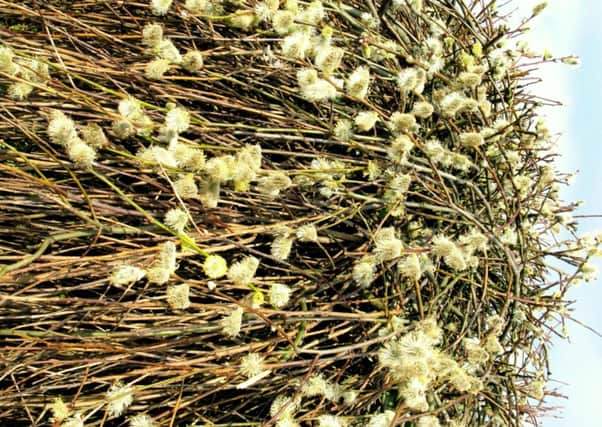Few tears for demise of weeping willow


Two-and-a-half decades later, I have dug up, cut up and disposed of a Weeping great willow. It wasn’t a match made in Heaven, although Salix caprea ‘Pendula’ was something that the birds grew to love for its ability to provide them with twiggy protection from the homicidal advances of the local sparrowhawk.
Now the birds will have to find shelter elsewhere, and before any outraged reader writes or emails to complain, there are plenty more hiding places within a few feet of where the willow stood.
Advertisement
Hide AdAdvertisement
Hide AdWhen I planted ‘Kilmarnock’ – described as a stiffly pendulous small tree with yellowish branches, ovate leaves, and large grey catkins with yellow anthers opening before the leaves – I thought it would grow into an elegant little mushroom of branches, perhaps eventually reaching a height of eight feet.
It was grafted, and I made sure no unwanted shoots appeared. So, for the first few years it, and me, were happy. I had a pretty little tree, which produced lots of catkins in spring to be followed by leaves that effectively clothed the branches right down to the ground, and Salix caprea ‘Pendula’ had a home it seemed to like.
Yorkshire isn’t renowned for being the sunniest place, but my little tree had the sunniest spot in the garden, plenty of protection from wicked winds, lots of rich, moist soil and a gardener who was willing to remove any broken, diseased, or crossing branches (and all shoots or branches from the central stem which wanted to grow up rather than ‘weep’).
Then the problems began: Rust began to play havoc with the leaves, the number of catkins gradually declined, and the tree began to spread outwards. Eventually, despite all my care and attention, ‘Kilmarnock’ gradually lost the will to thrive. More and more branches turned to brittle twigs, some parts of the tree failed to bear leaves, and the time had come for us to part.
I expected a major battle to remove the tree, but the roots came out of the ground relatively easily (for a willow) and now there’s only a hole to mark those 25 years…